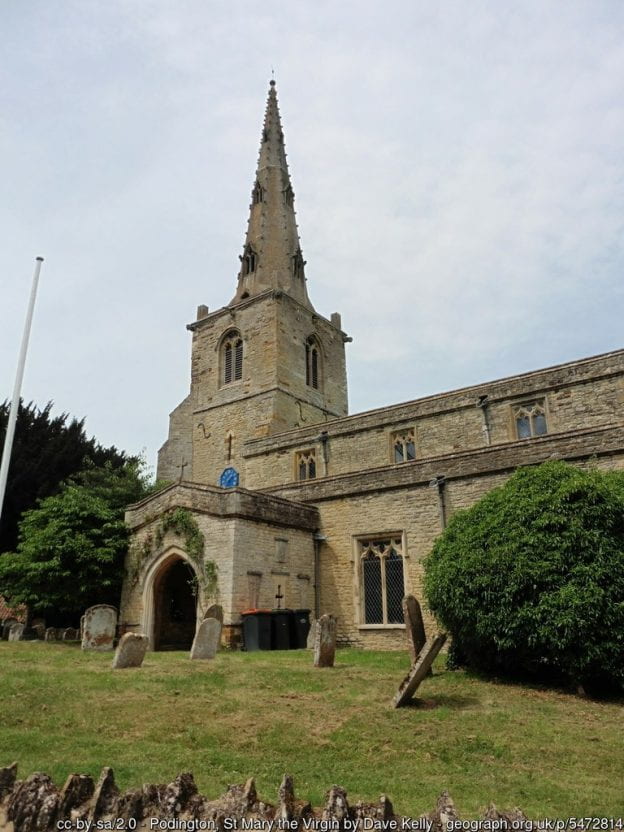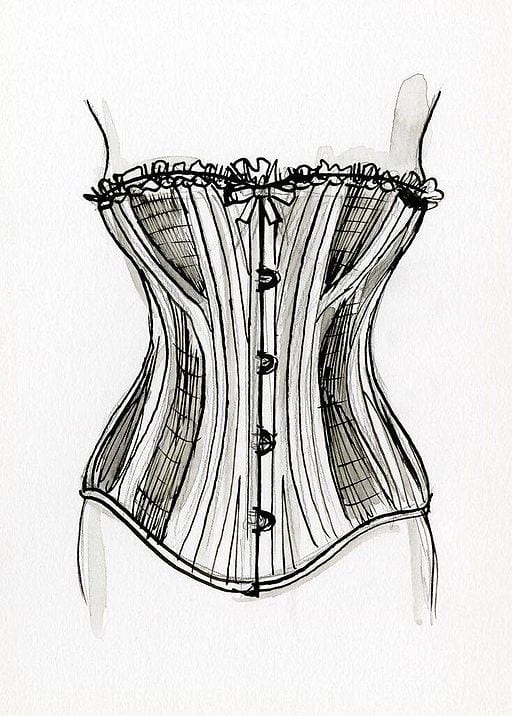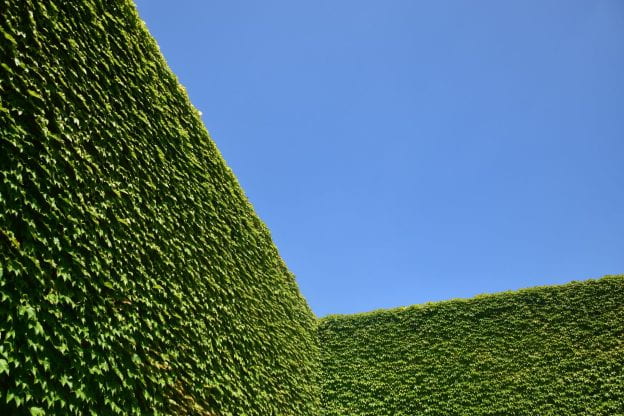[May 2024: I am currently revising and revamping this for a paper at the SLS conference in September, so there is more to come. Bet you can’t wait!)
As a Land Law teacher with a research interest in medieval legal history, I am always interested to see the two parts of my academic world coming together. Sometimes this can be frustrating, when lawyers, judges or others misrepresent the law of the past, or throw around ‘medieval’ and ‘feudal’ in an inaccurate fashion (see the sniffy references by Laws LJ to ‘medieval chains’ in Manchester Airport plc v Dutton [2000] QB 133, at 148A – while in fact describing actions which were around far later than the medieval period – and the many references to rapacious practices with regard to ground rents and service charges on long leaseholds as ‘feudal’, which they aren’t). I also get exercised by the practice of relying on partial evidence about an old case, by citing a Year Book (medieval to ‘early early modern’ law report) without cross-referencing with the relevant plea roll (official record). Traditionally, doing a proper job of tracing the plea roll entries would have been massively time consuming, but, although it is still not easy, the advent of digitisation of many legal records (especially by the Anglo-American Legal Tradition project) has certainly speeded up the process.
Why bother? Well, it is always good to have as much information as possible about a case, if it is to be cited, and the record can fill in details of procedure and pleading not fully noted in reports. The main thing, though, is that law reports of the past, and especially the deep, medieval past, were not like modern law reports, and treating them as if they are just like something from modern reports, or indeed modern published judgments, is something of a distortion. We may find, for example, that what is relied upon as authority for a proposition of law was actually rather less definitive than would appear. The charm and frustration of early reports is that reporters were often more interested in noting lines of argument, and opinion, than in giving a clear ‘ratio’, (and frequently do not tell us what was the outcome of a case). If at all possible, then, it seems sensible to try to find both record and report, where these exist.
And so to the case I wanted to discuss. It is one which is frequently cited in texts on a tricksy part of Land Law: (freehold) covenants. I was first introduced to it as a second year undergraduate student, when our textbook referred to it in semi-anonymous terms as The Prior’s Case (1368). Clearly a proto-medieval-legal-historian even then, I wanted to know more, but nobody seemed to be able to tell me anything about it. I was given the strong steer that there was no need to ask questions. I did get as far as tracking it down in the printed Year Books, but struggled at that stage both with the black-letter printing and, of course, with the Law-French and peppering of Latin. I did learn something though – a truth about history and the doctrine of precedent in English law: people cite things they haven’t read; which they couldn’t have read. It was rather unsettling.
Now, years later, when I have got to grips with the old languages and scripts of the law, and learned a thing or two about modern lawyers and judges as well, I can take it all a bit further. As ever with historical study, one notes that some things change, and others stay the same. I checked the Year Book report once more (with the aid of the extremely useful Seipp’s Abridgement) and then tracked down the plea roll entry relating to the case. You can see the YB report here {Seipp 1368.013; YB 42 Edw. III f. 3 pl. 14) and the plea roll entry is at CP 40/430 m. 60.
(I should say that I do not claim to be the first legal historian to have found this – there is some distinguished American scholarship on this, though somehow, English courts and lawyers seem to have been less interested in such academic study. There may be something to think about here for legal historians in England – is the fact that there is some … questionable … legal history in legal practice down to lawyers alone, or is there a certain exclusive insularity which has not exactly welcomed in the wider world? … One to ponder …)
Anyway, what do these tell us, and does it add to, or alter, the conventional modern English view of the case? Well, the first thing to note is that the names of the parties have become woefully garbled over the centuries. The printed YB version of events has it as Laurence Pakenham v. a prior (anonymous), and it is as Laurence, or Lawrence, Pakenham’s case that Coke cites it: Co. Litt. 385a. In fact, the plea roll shows that the case was not brought by a man with a surname tying him to Suffolk, but was, in fact brought by Laurence de Pabenham. This Laurence was a man with ties to Bedfordshire and Northamptonshire, Pabenham (now Pavenham) being in the former county. Now, a b and a k can be hard to distinguish in certain scripts, so some slippage here is not massively surprising. An additional garbling crept in, however, at some point, renaming the case ‘The Prior of Packenham’s Case’.[i] This might seem like a small thing, but its mixing up of plaintiff and defendant means that it is not a version of the case name which would have been given by anyone who had actually gone and had a look at either the YB report, or the passage from Coke’s First Institute, which is usually cited with it. It is all rather indicative of (a) sloppiness; and (b) a casual attitude towards the truth. Alternative facts, anyone? I would certainly not be impressed by one of my students citing – and therefore claiming to have read – something which they clearly had not read. It reminds me a little of some of the nonsensical footnotes which give away the more inept Chat GPT user.
The plea roll tells us that the defendant prior and convent were from Canons Ashby (Essebi) in Northamptonshire. This was a house of Augustinian canons. The manor to which the covenant was attached was Hinwick),[ii] and Laurence claimed that the covenant was an old one – made with his great grandfather, Hugh, by the prior and convent of Canons Ashby back in the reign of Henry III (14 Henry III, which was a LONG time before – by indenture, formalities fans – wouldn’t it be great to find that, to understand the detail of the deal?). The covenant allegedly laid down that the canons should be singing three times per week in the chapel of Hinwick, in perpetuity. Laurence claimed, further, that, though they had massed away for almost a hundred years, they had not done it for twenty years, and he had not been able to get the prior and convent to keep the covenant. Just why the canons were holding out against keeping the bargain, who knows. I imagine it might be a bit of a pain. Laurence claimed 40 l damages for their failure, anyway.
All very interesting, and serving to highlight some of the changes between the PR and YB versions, but what about the past/present question – does the case, in either version, unequivocally stand for the proposition(s) for which it is now cited?
How is it now used? We can see a modern citation of The Prior’s Case in Bath Rugby v Greenwood and others [2021] EWCA Civ 1927,[iii] Nugee LJ, at 37, referred to it as an ‘example of noticeable antiquity’, and quoted Clauson J, in In Re Ballard’s Conveyance,[iv] who was, in turn, coming at The Prior’s Case through Coke in Spencer’s case (1585),[v] was a case which might bear further scrutiny in terms of its accuracy and relevance. Anyway, the Spencer version of the point of the case is given as follows:
The Prior’s case was one where the prior of a convent had covenanted that he and his convent would sing all week in the chapel of a manor for the lords of the manor. … a successor in title to the manor was able to enforce the covenant: “for the covenant is to do a thing which is annexed to the chapel, which is within the manor, and so annexed to the manor, as it is there said.
Nugee (38) thought that it was fairly obvious that the benefit would be annexed in this sort of case because it is ‘usually obvious which land such a covenant benefits … a covenant to sing for the lord of the manor in the chapel of the manor benefits the lord of the manor as owner of the manor,..’ There is probably scope for interrogating that sort of benefit, but let’s leave it at that. It is about passing of benefit of covenants, including positive covenants, by annexation to land/property rights.[vi] The Prior’s Case is also used as authority for the idea that there is no need for a servient tenement, in covenants, unlike easements.[vii]
The case itself was a little less clear cut. It featured quite a lot of argument as to whether Laurence had made a fatal error by claiming as the heir of Hugh. The thing was that there was another person who seemed to have a better claim to be Hugh’s heir – a young girl called Margaret, a minor, who was descended from Hugh via a senior branch to that from which Laurence sprang. (In the YB, Coke and ever thereafter, Margaret is written out of the story, which becomes one of an older and younger brother: interesting in its effacing of females, but ultimately not crucial to the legal argument). The prior’s side made a lot of this in argument. Laurence and his lawyers tried to get around this by basing his argument on his land rights: he was tenant in tail of the land to which the chantry was appurtenant (Hinwick), so, while Margaret might be ‘senior’ in terms of blood, he had the link via the land, and that meant that only he could in fact sue on this. Both YB and plea roll suggest that the court found the answer far from obvious, and it was repeatedly delayed, and adjourned.[viii] Coke seems to have skated over that aspect of things, and stated that there was a straightforward finding for Laurence, and so a decision that the covenant was annexed to the manor, so that it could be enforced by Laurence, as the person holding it.
The YB suggests that things were going in Laurence’s favour, but I have not yet turned up a final decision, and I am not sure that we can take it on trust from Coke that there was a definite decision that looks like annexation of the benefit to land (let alone to an estate) prevailing. As is often the case, Coke may have tidied things up rather, bringing an older legal world within the norms of his own day, and effectively making substantive rules out of a dispute about pleading. This passage rather sums up his approach:
Observe reader your old books, for they are the fountains out of which these resolutions issue, but perhaps by these differences the fountains themselves will be made more clear and profitable to those who will make use of them’.. [ix]
Even taking this as a definite judgment, it is very much something to which some context would need to be added and questions asked. There is at least potentially something of a mismatch between the idea of the attachment of a benefit to a manor and attaching it to land, or an ‘ordinary’ estate in land.
So, long story short, I am not sure The Prior’s Case quite stands for the straightforward proposition for which it tends to be used, and there is room for improvement in the way in which lawyers use old cases in new cases and practitioner texts. It strikes me as interesting that legal practice has created its own rewritten versions of the past, for use in modern law. Who would have thought that stereotypically pompous and conservative lawyers would actually be happy working in a post-truth environment? Aside from the questionable implied claims to scholarship and a basis in authority which are embodied in garbled citations of this case, there is something decidedly odd about purporting to respect precedent whilst not actually making an effort to look up records or reports. To the extent that all of this suggests an idea of historical scholarship, it is the historical scholarship of several generations ago, with its passing acquaintance with documentary sources and its reliance on the words of great men (Coke, Blackstone, others, but mostly Coke).
GS
4/12/2023
[DRAFT: DO NOT CITE WITHOUT PERMISSION; This is a ‘work in progress’ and the search for the end of the case goes on!]
Update, 7/12/2023
Two more things:
- the case is mentioned in Simpson. As Pakenham’s Case (with YB ref) and there is an explanation of the extension of the running of the benefit of covenants in land, beyond basic warranties, in this case.[i] It rather assumes – perhaps because of the date of the case, that this was about a post-1290 arrangement, but that is not what the plea roll implies.
- I am still waiting for a chance to check the plea rolls thoroughly, but there is a hint in a secondary work that the case was not in fact simply decided in favour of Laurence, as modern accounts assume. Now, I confess that I have not yet managed to get to the British Library to check out the manuscript cartulary (see how easy it is to admit that!), but it looks very much as if there was a settlement, with Laurence agreeing to pay the canons for their services: see G. Baker, History and Antiquities of the County of Northampton 2 vols (London, 1822), II, 10, citing Ashby Cartulary in possession of R Orlebar esq of Henwick co Bedford, fo. 204. This is MS Egerton 3033. I have now seen this (following a delay because of the difficulties at the library this year) and will bring this into the SLS paper.
[i] A.W.B. Simpson, A History of Land Law, 2nd ed. (London 1986), 116-18.
Image: This, I think is the church in question. Note absence of singing canons. Proves my point, I think.
[i] Preston & Newsom: Restrictive Covenants Affecting Freehold Land, eleventh edn (London: Sweet & Maxwell, 2020), Table of Cases and 1-023.
[ii] Inquisition Post Mortem of Laurence’s father, with the right lands. Inquisitions Post Mortem, Edward III, File 78 | British History Online (british-history.ac.uk)
[iii] This case involved rugby rather than singing masses. (I will hold back from making points about the similarity between religion and sport, sport as the modern Opium des Volkes, etc., though I may just be thinking it). Basic issue: did a covenant from 1922 against particular commercial uses mean that Bath Rugby (Club) could not develop the land in question as they wished, to which the answer would be yes, if the benefit of the covenant had been annexed to identifiable land.
Covenants superfans will note at once that, because of the date, there was no tangling with s. 78(1) LPA 1925 or the top fun which is the case of Federated Homes Ltd v Mill Lodge Properties Ltd [1980] 1 WLR 594. If you know, you know.
In the end, the answer was that the land was not identified precisely enough, so the covenant did not work to stop the development.
[iv] [1937] 1 Ch 473 at 482.
[v] 5 Co Rep 17 b
NB – Spencer’s case is about the passing of the burden: Ps are original lessors, so not passing of benefit.
[vii] L. Turano, Intention, interpretation and the “mystery” of s. 79 of the Law of Property Act 1925’, Conv. 2000 Sep/Oct, 377-97, 379; Megarry, Robert, William Wade, Stuart Bridge, Elizabeth Cooke, and Martin Dixon. 2019. The Law of Real Property Ninth ed. London: Sweet & Maxwell, 31-014. ‘in an old case a Prior covenanted with the lord of the manor that he and his convent would sing divine service in the chapel of the manor. It was held that the lord’s successors in title could sue the Prior for non-performance.’
[ix] Co Rep at 17b, p 76.









